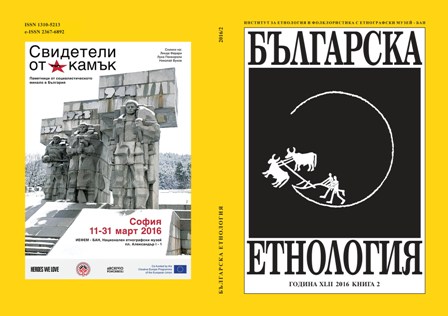
We kindly inform you that, as long as the subject affiliation of our 300.000+ articles is in progress, you might get unsufficient or no results on your third level or second level search. In this case, please broaden your search criteria.

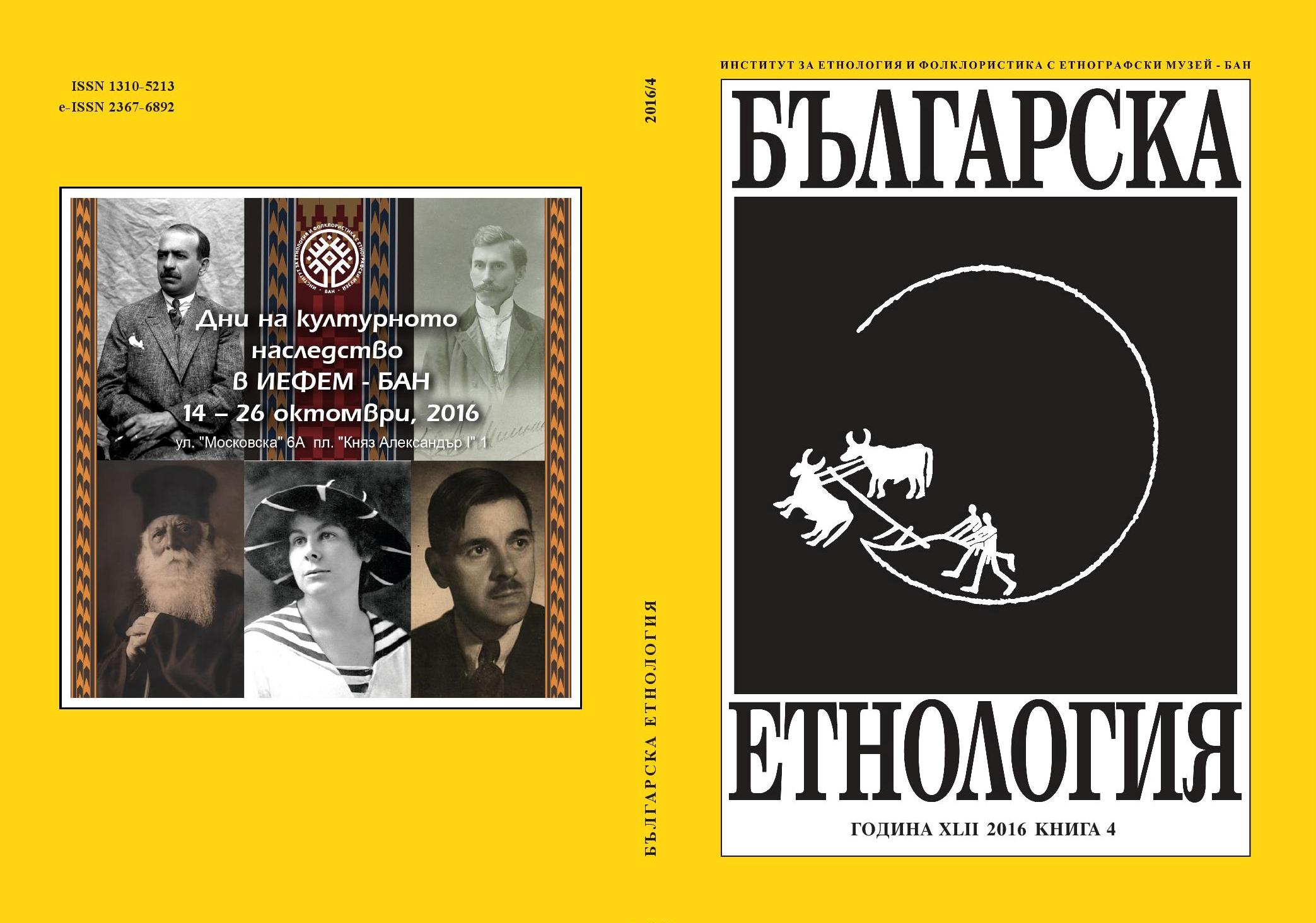

One of the typical and relatively stable features of the everyday life of the Bulgarianimmigrants in the historical and cultural region of Bessarabia are the patronal festivalsand customs held within the frameworks of the village, neighbourhood or familyand referred to as zbor/sabor (збор/събор), hram (храм), kurban (курбан), tsarkva(църква), panagir (панагирь), cherkuvane (черкуване), moleben (молебен) etc. Asfor the designation збор (a fair), it is clear that it precedes the Russian designationхрам (a patron saint’s day) which penetrates the region under study later on andwhich is widely used at present. What stirs up bigger interest is the fact that exceptfor village church festivals this term (as well as some of the other above-mentioned) was also used for intervillage festivals held at the landmark of the territories of two,three or more villages – the so-called fairs at the landmark also known as moleben orcherkuvane for rain and good health.As far as the patron saint’s day is a universal Christian phenomenon and stilla general practice in the villages of the region studied here, it could be assumedthat the gathering itself, the making of zbor (or moleben) at the landmark (at theborder between a group of villages), which is neglected today almost everywhere,is a form typical only of the immigrants (Bulgarians and Gagauzians) in Bessarabia.This practice attracts the attention with respect to its nature and development as partof the all-Bulgarian system of patronal village festivals as well as with relation tothe influences, changes and specifics through which it inevitably goes under theconditions of the many-tounged and polycultural environment of Bessarabia and theRussian Orthodox Christianity.The fieldwork materials collected so far do not allow a coprehensive and thickdescription of the phenomena intriguing us as well as a more elaborate analysis.That’s why the article only poses the problem or rather interpretes it in connectionwith some concepts of the kin and family-territorial patronal festivals and customswhich were formulated a long time ago in the Bulgarian science but which are stillrelevant.
More...
On the basis of written sources and field materials, the article examines the phenomenonof the “Odessa cuisine” as a regional complex of food. In the context of thehistorical dynamics, it shows the role of the Balkan traditions in the formation anddevelopment of the everyday culture of the inhabitants of Odessa. Special attentionis paid to the current state of the trade subculture and, respectively, to the systemof the food traditions in Odessa. In particular, the article shows that there are manyproducts introduced by natives from the Balkans (first of all, Greeks and Bulgarians):eggplants, tomatoes, cheese, corn, mutton, grapes, etc. The regional dishes perceivedas “Odessaian” but having roots in the ethno-cultures of the above-mentioned communities,are developed on this basis. The text shows also the “blue” (eggplants) invarious variations of preparation and the “pshonka” (corn). Beside the national, theprofessional mass cuisine is also analyzed (restaurant); in it the Balkan substratumhas found its place a long time ago along with the Jewish, Ukrainian and Moldavian.In the menu of these institutions, there are surely a number of dishes with Balkanorigins. On the other hand, it is worth characterizing the special national restaurantsof Odessa (Bulgarian, Gagauzian, Greek).
More...
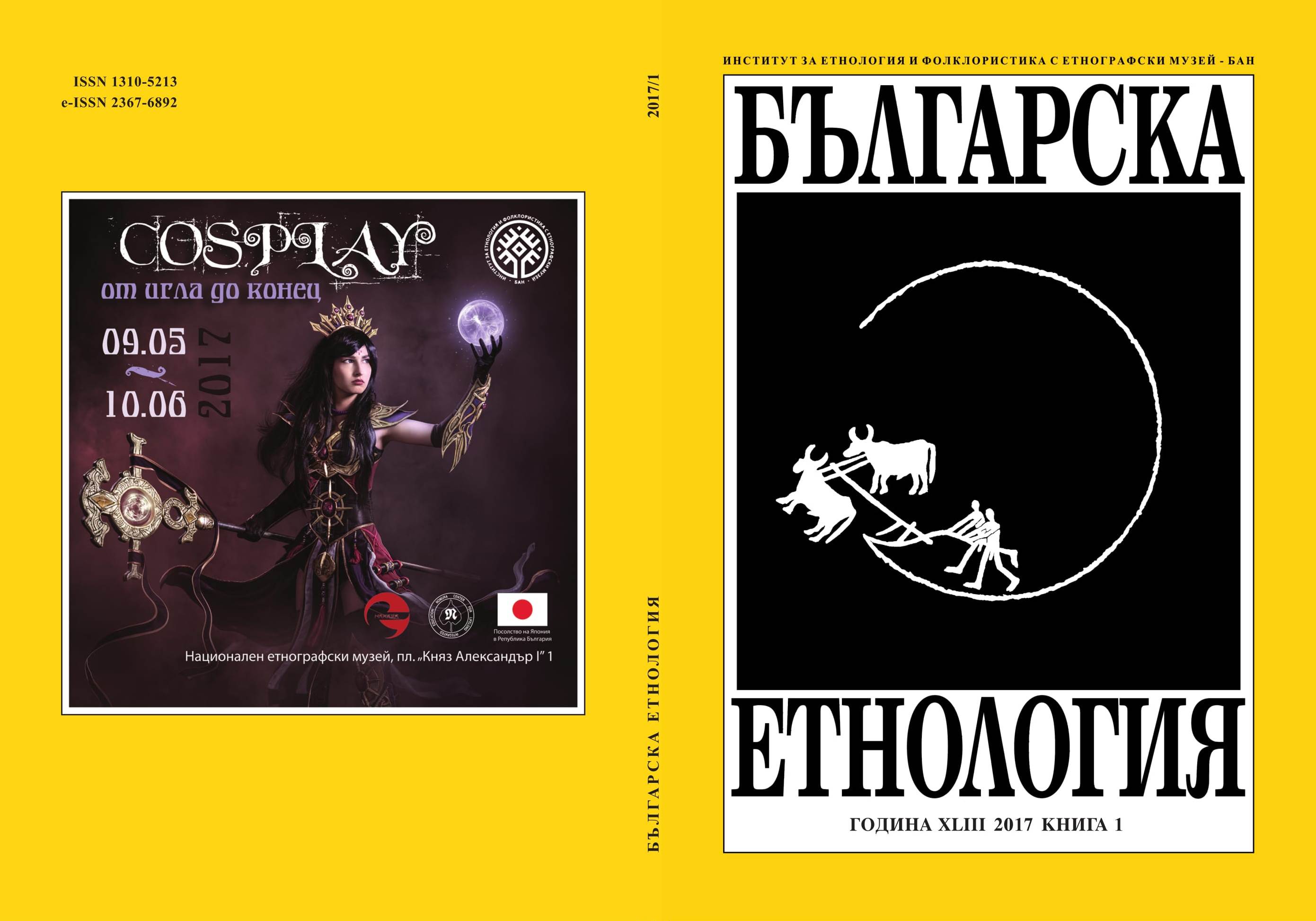
The article makes a brief historical review of the development of Roma publicationsin the countries in Eastern Europe by emphasizing the processes in each country andthe interrelations between their policies regarding the Roma culture and the Roma literary production. The aim of the article is to show that the development of Roma literature is related to the political, social and cultural context in the country or region of its creation. The comparative historical approach is the most appropriate for the purpose since the tendencies in the development of the Roma literature are related to the policies of identity (in general or directed to the Roma population) in different historical periods and regions.
More...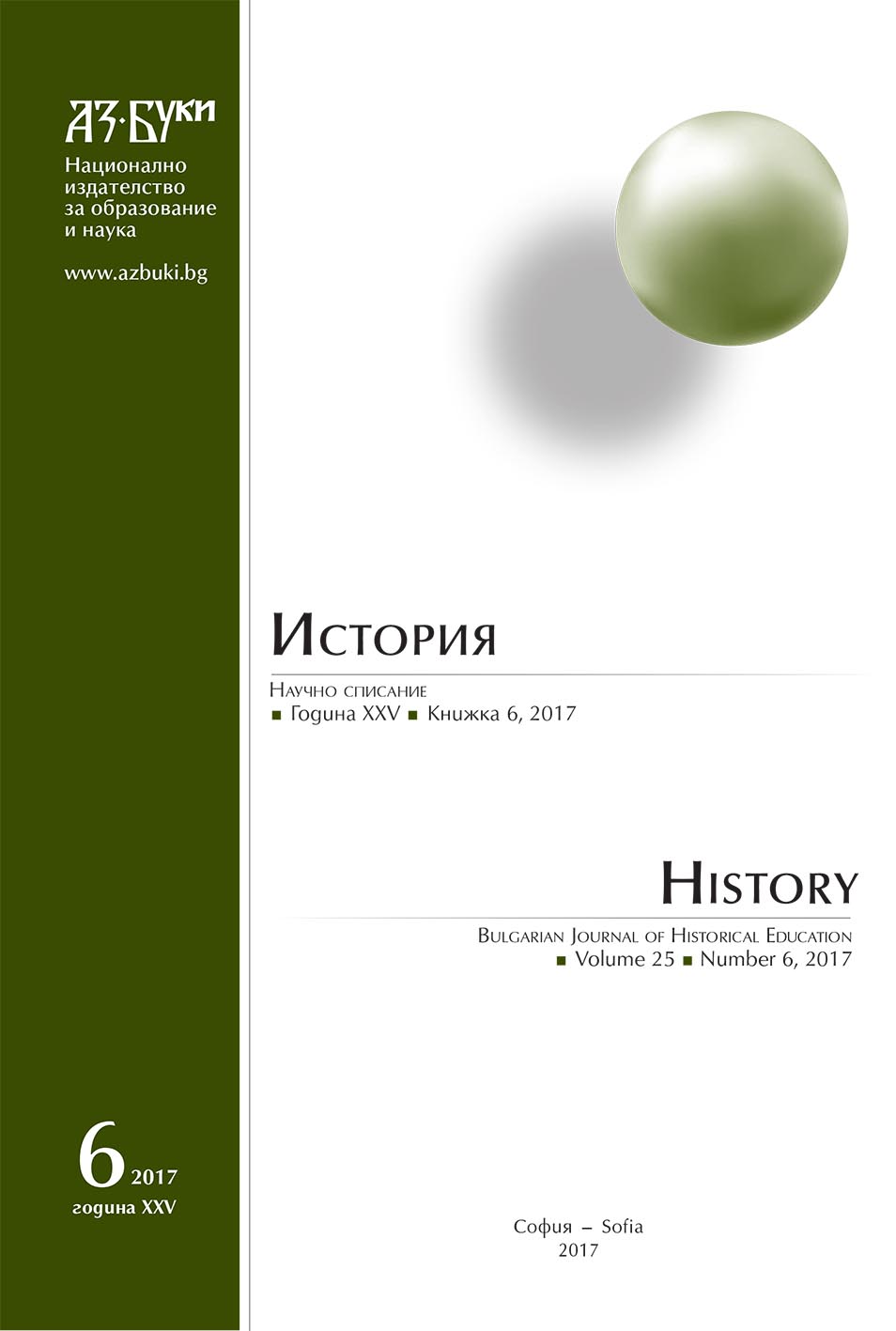
The article presents the first results of a pilot study in the field of social gerontology. The key features of two groups of retirees in the post-socialist period (a metropolitan city – a small town), derived from radically opposite families (communist elite – middle hand peasants), are traced and analyzed. A special emphasis is placed on the political influence that members of both groups have in their local space.
More...
In this paper I briefly investigate the impact of three types of state agricultural policies on rural households in Valchedrum region, North West Bulgaria. I argue that the state remains a key factor, capable to transform the local economies, identities, and everyday life in a few years. I argue that unlike the situation in socialist Bulgaria, when the state lacked resources to implement its policies and had to rely heavily on coercion, the local people have rather limited options for agency now against powerful and efficient EU agricultural policies.
More...
The study examines the contributing moments in the scientific work of Assoc. Prof. Vesselin Tepavicharov, DSc., concerning the approaches developed and approached by him for education in a multiethnic environment. Data from a survey conducted in educational institutions in the municipality of Straldja are analyzed.
More...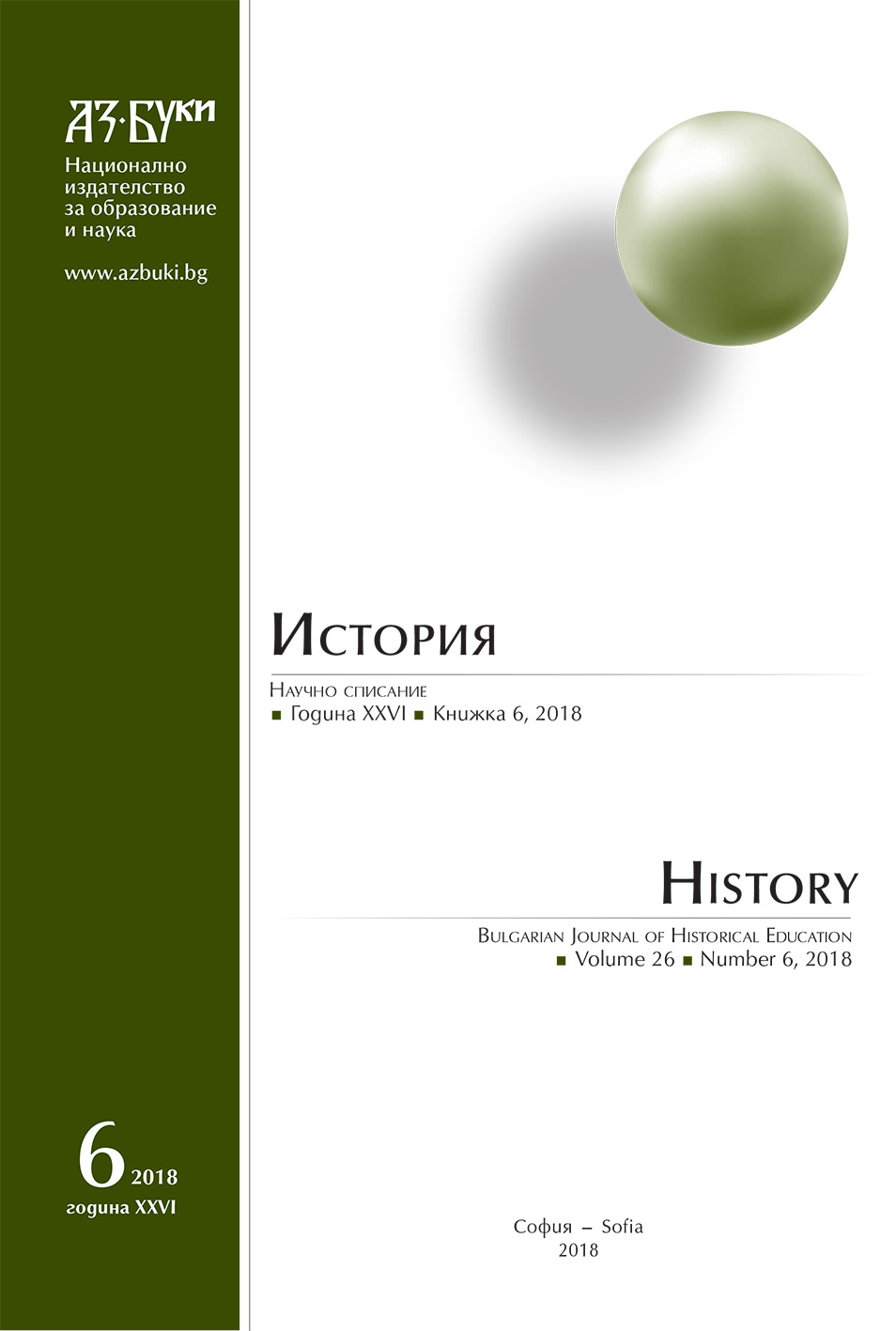
The common enemy of the reborn Poland and the Ukrainian People’s Republic was Bolshevik Russia. On the initiative of the leaders of both countries: Józef Piłsudski and Symon Petlura, an alliance agreement was signed between Poland and the Ukrainian People’s Republic on 22 April 1920. Piłsudski treated cooperation with Ukraine as a key element of his broader plan to rebuild eastern Europe. The result of the concluded alliance was the participation of the Ukrainian army in defense of Poland against the Bolshevik invasion in the summer of 1920. However, the great military victory was largely wasted politically because no Ukrainian state was established. The Treaty of Riga, signed on March 18, 1921, signified de facto defeat of Piłsudski’s plans.
More...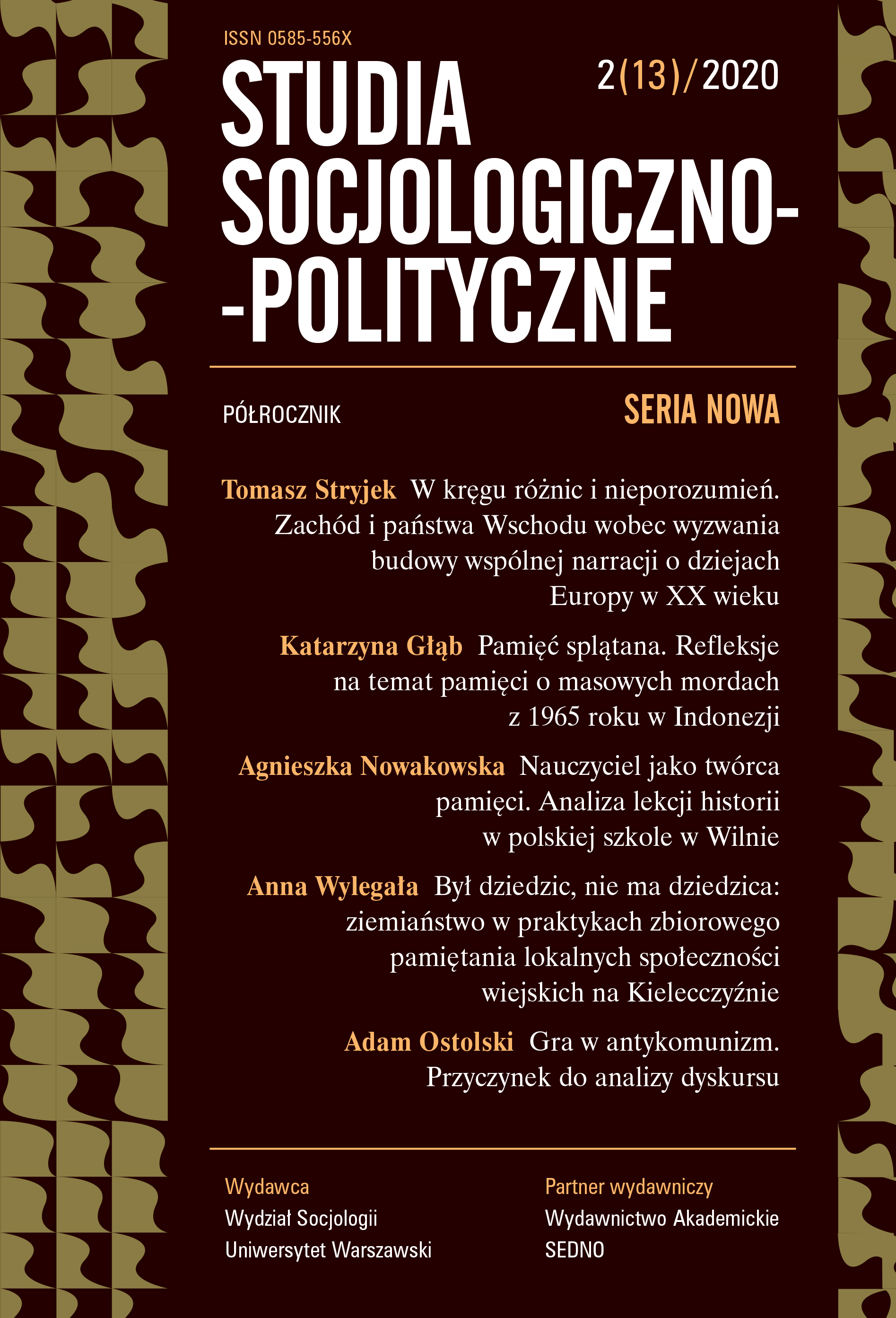
This paper focuses on one specific aspect of the Polish collective memory, namely – on the memory of the landed gentry and their expropriation from the Polish countryside conducted by the communist government in 1944. The communists expropriated the gentry, gave most of the land to the peasants and irreversibly changed social and economic structure of the Polish countryside. The paper analyzes how the very fact of the gentry’s historical presence and later expropriation is represented in the collective memory of the local village communities, and how it is used in the creation of the local memory scope and historical identity. The theoretical focus is on the acts of collective remembrance as understood in the work of Jay Winter, and then on the public aspect of the collective memory. Grounded in extensive fieldwork, this paper focuses on the case study of two villages which give examples of particularly active commemorative practices connected with the symbolic legacy of the expropriated landowners.
More...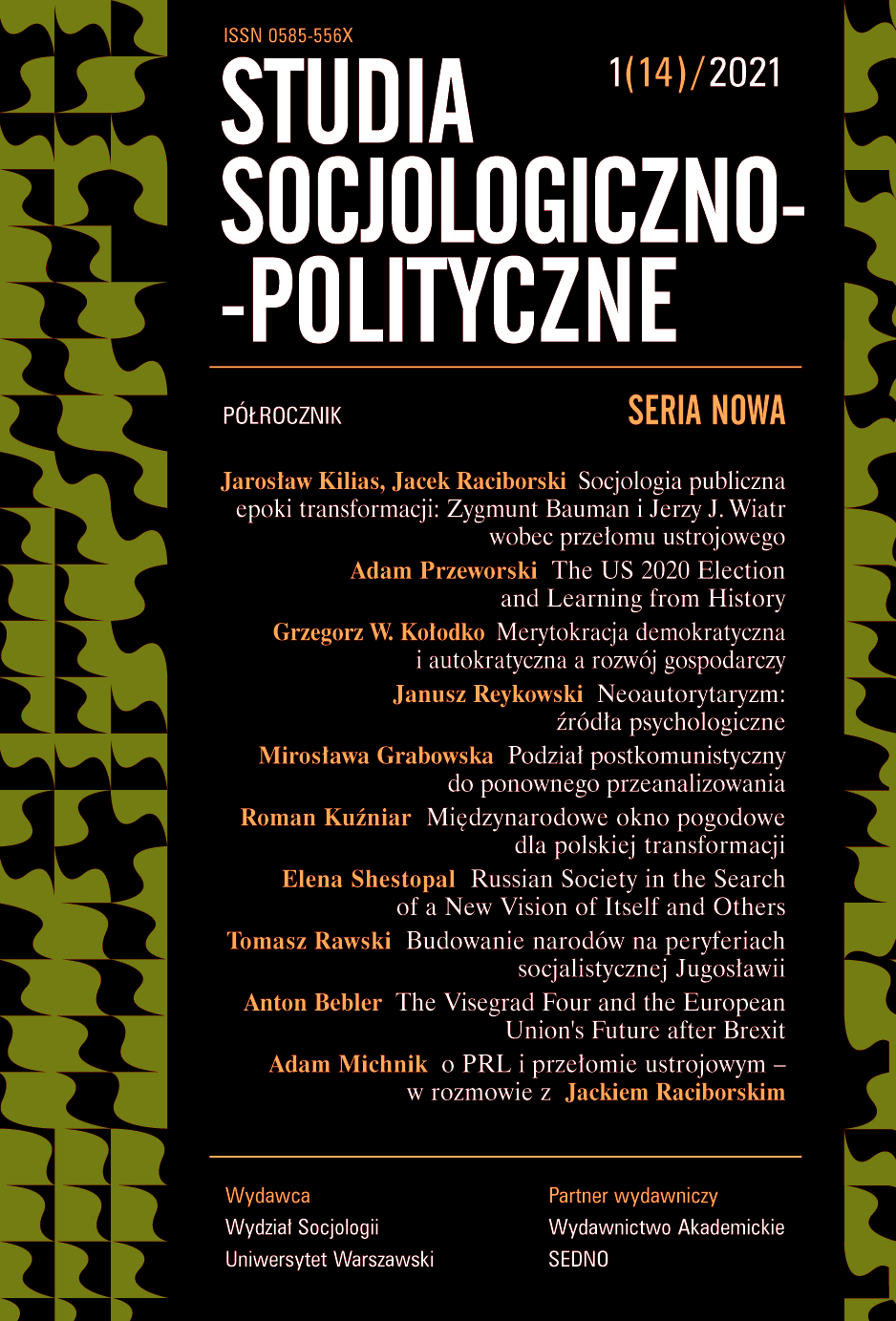
The main thesis of this essay is the assertion of the concurrence of the Polish transformation after 1989 with the world switch towards the liberal international order at that time. Poland was among initiators of these changes and hugely benefited from them. It applied to the establishment of the regime of the rule of law and the open market economy. The success of the Polish transformation and the rapid economic growth would have not been possible or they would have been limited without this external support.The main although not the only theoretical explanation framework to these processes is the liberal school of thought. Democratic regress in Poland (since end of 2015) and a turn to authoritarianism coincide with backsliding of the international liberal order. Unfavourable internal changes incapacitate Poland’s foreign policy as well as its international standing.
More...
The East-West divide within the EU has deep roots in history. It has been reflected also in the Visegrad Four’s specificity and in its conflictual relations with several EU institutions and governments of several Western European members. As Brexit showed the V4 resistance to the EU federalization positively contributes to the EU longevity as a loose confederation. The real problem for the EU are illiberal regimes in V4 states and the phenomenon of elective authoritarianism which is not confined to Eastern Europe. The EU will have to learn to manage tensions created by these phenomena.
More...
Some reminiscences of Adam Michnik on Jerzy J. Wiatr and Zygmunt Bauman and some other public scholars at the time of the Polish People’s Republic and after its peaceful demise in 1989/1990. Main topics of the discussion between Adam Michnik and Jacek Raciborski concern the dynamics of the social and political changes that led to the regime change, the tension between their spontaneity and their conceptualization, social and psychological contexts of decision making at that time, and the issue of responsibility of people handing over power peacefully: if and how let them be a part of the transition without punishing them for previous crimes.
More...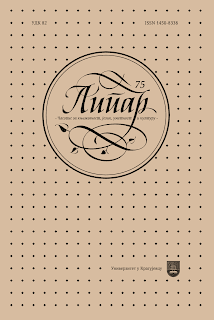
The goal of this paper is to investigate the memory of the Holocaust, i.e. the reception and representation of the suffering of the Jewish population during the rule of the Third Reich (under Nazi rule and occupation) in the capitals of the states constituted after the Second World War - in East Berlin, GDR, and Belgrade, SFRY, during the period from 1945 to 1989/1991. Relying on the achievements of memory studies and analyzing the political moods of that time and the ways of constructing official narratives about Jewish suffering in selected post-war Communist countries, the similarities and differences in the policy of representing Jewish suffering in these two countries and the memory of Jewish victims in places of remembrance and in the practices of remembrance in their capitals will be pointed out.
More...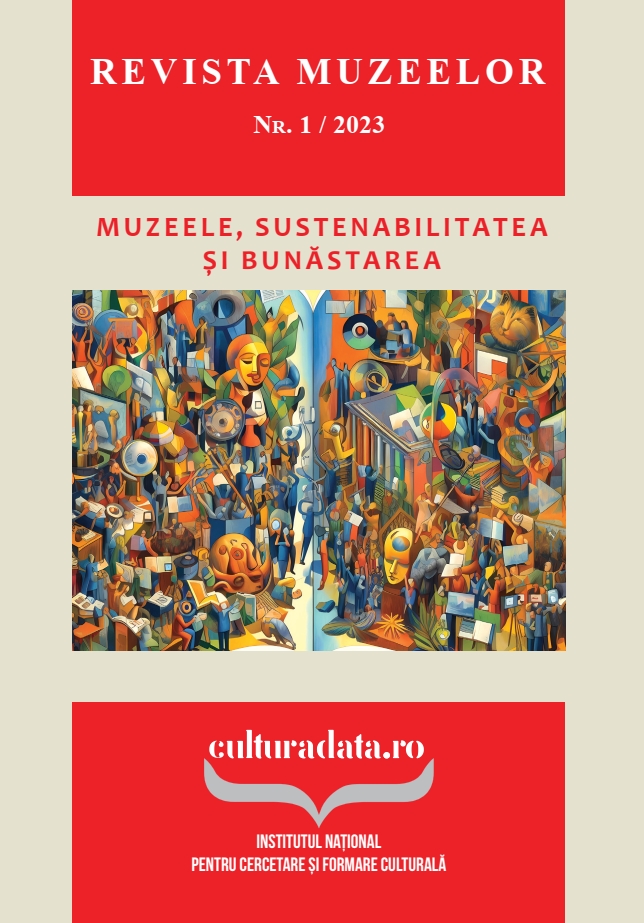
This review aims to bring together two private museums whose theme is largely similar: life in a communist country. The exhibition of the Museum of Memories from Communism in Brașov responded to the shortcomings in Romanian state-owned museums to cover a timeframe from recent history. To put the exhibition into perspective, after I present it and consider its museological features, I briefly bring into discussion the DDR Museum from Berlin. I focus not only on the visible part of the two – that is, the exhibition, but I also go backstage after connecting with those responsible for these two private museological endeavors, in order to discern the collecting undertakings and their role in the wider frame of museums landscape in a former communist country. Finally, after my visiting experience with both exhibitions and an unwilling / unfortunate entanglement with communist practices that are still up and running (the almost-failure of having a form stamped), I reflect on the role of a museum in providing deeper understanding of socio-cultural practices that affect our (not only institutional) lives up to our days.
More...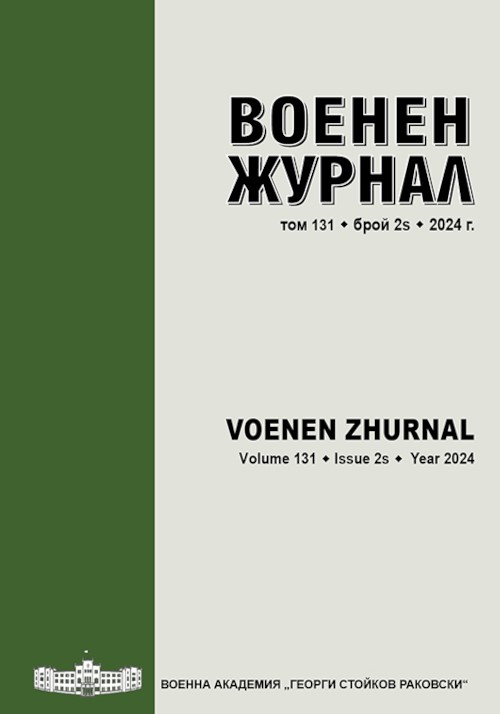
The main goal of the present study is to show for the first time the nuances of the political-diplomatic relations between Bulgaria and NATO in the context of the difficult first years of the democratic changes in the country. The text is based on a large amount of newly released archives from the Ministry of Foreign Affairs and the Central State Archive, thus claiming a high degree of objectivity.
More...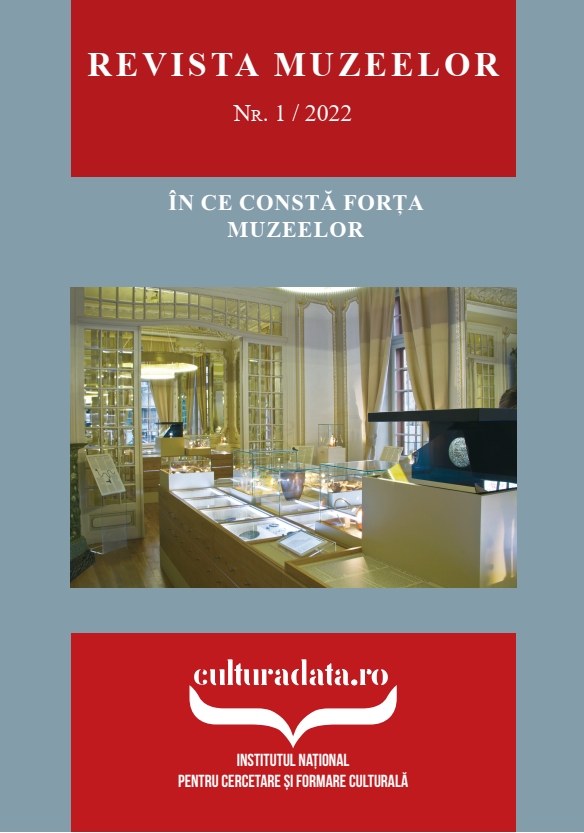
The subject of this paper is still not enough explored, not only from the perspective of museum research but also from that of studies belonging to other fields that take into account the need to integrate culture in urban regeneration. Because this topic is current and relevant for the multitude of cultural and social forms in which the museum institution could become a lasting pillar, we believe that our attempt will allow us to sketch an integrative project from which to extract some useful considerations for future research. The conclusions that emerge from positioning the National Museum of Romanian Literature in Bucharest (MNLR), more precisely its cultural hub located in a disadvantaged area, in the epicenter of urban regeneration through culture of the adjacent area, will hopefully be compelling enough to support a cultural axis. Especially since the targeted area (although it has a rich local cultural heritage, which deserves to be capitalized and whose historical memory must be preserved) does not yet experience the long-awaited revival, MNLR - as already demonstrated - can become a crucial actor, together with partners from civil society, in drawing a new cultural axis in the Romanian capital. This could contribute to the transformation of a physically degraded area with precarious living conditions into an engine for integrating culture into the daily concerns of as many fellow citizens as possible, and not only those belonging to the local community. After all, any attempt to achieve a prospective approach focused on the museum institution only validates the generous and mobilizing slogan of ICOM: “Museums have no borders, they have a network”.
More...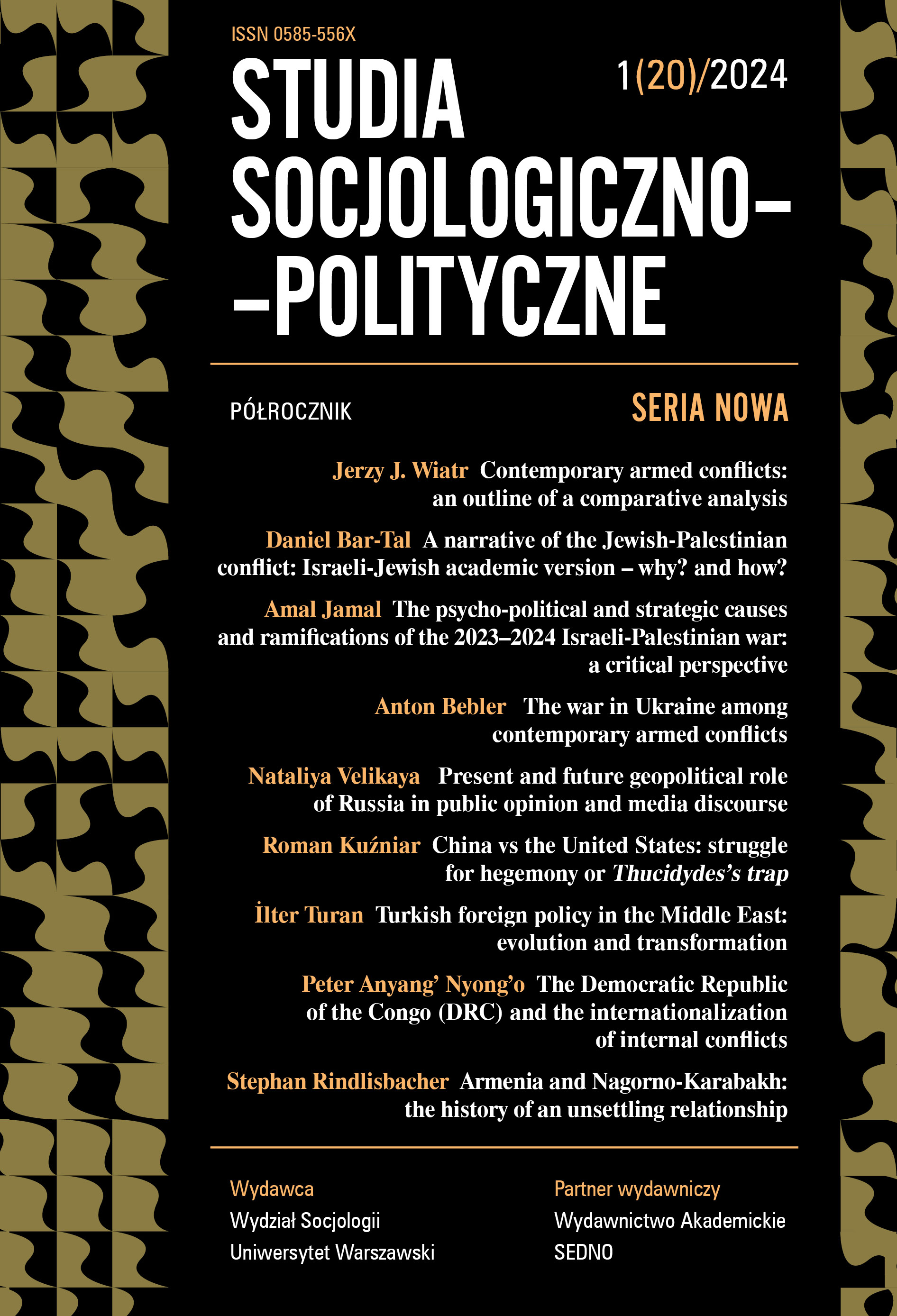
The war in Ukraine is the biggest, bloodiest and longest war in Europe since 1945. Its initial stage holds similarities with several other armed conflicts and wars in the last 50 years on Cyprus and in the territories of the former Soviet Union and the Socialist Federal Republic of Yugoslavia (SFRY). Among the cases in ex-Yugoslavia the greatest similarity is seen with the war in Croatia (1991–1995). These conflicts stemmed from almost simultaneous breakdowns of two multinational „socialist federations” and their communist regimes. The dissimilarity of the second stage of the war in Ukraine and the war in Croatia is primarily due to the processes of NATO and EU enlargement coupled with the USA’s policy of using NATO enlargement and Ukraine as tools to harm and weaken Russia. The conflict about Ukraine developed into an indirect war between Russia and the US-led West, where Ukraine is the West’s proxy and the main victim. The final outcome of the war in Ukraine will be decided on the battlefield and not around a diplomatic table. Still, it will be very different from that in Croatia. Responsibility for the war in Ukraine and its consequences must be shared between the two direct belligerents, the co-responsible USA and other NATO members.
More...
This article discusses the prospect of the transition of the Chinese-American rivalry into an open, all out war. The problem arises from the experience of history – two leading powers eventually refer to war in order to assume their, one of them, strategic and political primacy within the relevant international order of their time. The present situation – after a demise of the international liberal order – of confrontation between the US and China is being compared to the so-called Thucidydes’s trap, which is the reference to the Peloponnesian war. The author is challenging both the comparison and the inevitability of the war between the Big Two, without however totally excluding the possibility of some military demonstrations of their resolve to push for or to defend their global status. Reasons for such an assessment are based upon negative (nuclear capabilities) and positive (economy, development) interdependence factors between the only two superpowers and the nature of the contemporary international environment, complex and tight, which will be preventing the Big Two from sliding into the world war, disastrous for all.
More...